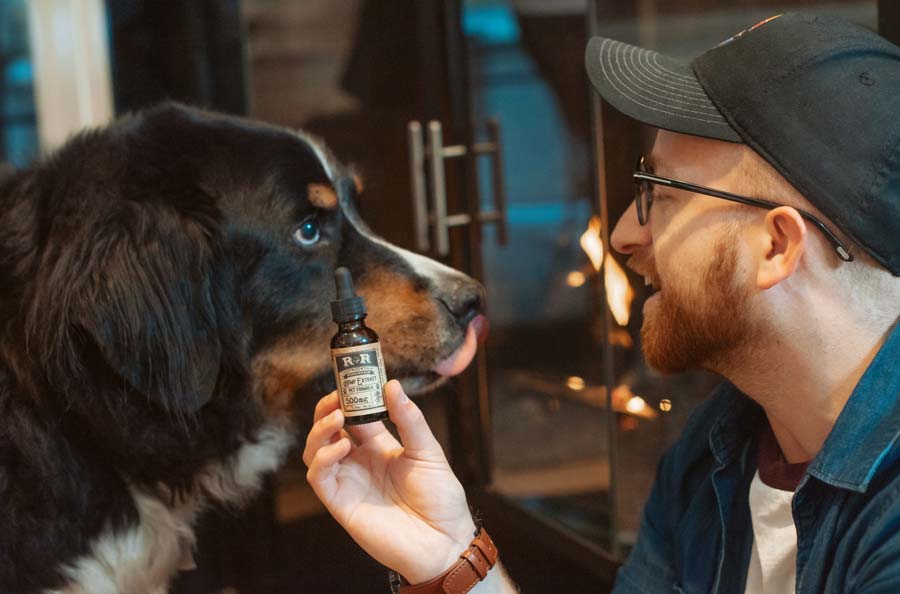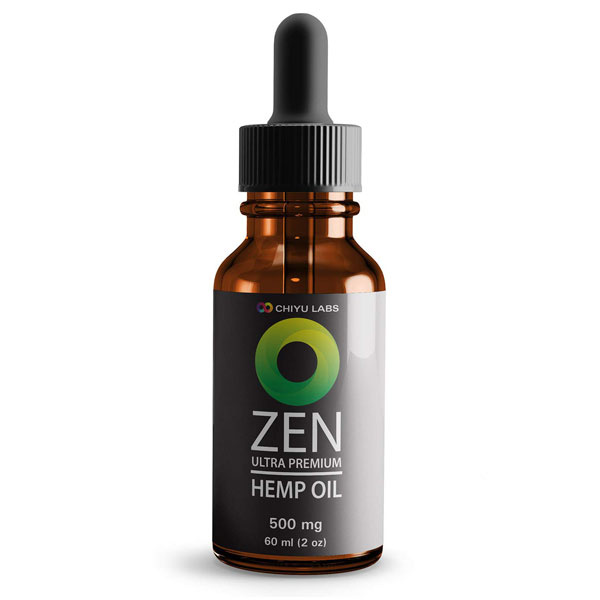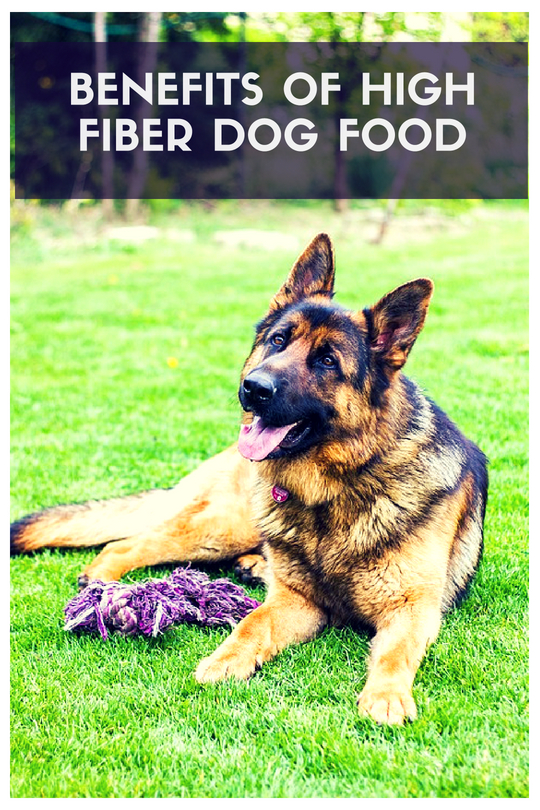Dogs, like humans, get occasional itching on their skin. Depending on the season, the environment in which they live, and what they’ve come in contact with, their itching might even flare up a bit more during certain periods of time.
Itching only becomes a problem when it’s chronic or intense, which usually indicates there’s an underlying problem. The most common cause for itching in dogs is fleas, but mange in dogs is the second most common reason for itching skin.
The good news is mange can be treated. If left on its own it can be serious and trigger secondary infections, but for most domestic dogs, mange is something that can be dealt with relatively easily.
What is Mange?
Mange is a skin condition that occurs when mites are living on the skin. A few mites usually don’t cause too many problems – they’re just a natural fact of life – but when they begin to multiple they can trigger a problem.
This is because they overpower the immune system. The body isn’t able to combat the mites as it would otherwise and they take over. This is why mange tends to be a more serious problem for younger and older dogs, as well as those who have a compromised immune system.
There are a few different types of mange and understanding the differences can help you better prevent and treat mange in dogs. Some are more severe and tend to spread faster, so it’s important to identify the specific type of mange and treat it accordingly.
The first type of mange, sarcoptic mange, is caused by the Sarcoptes scabei mite. It’s one of the itchiest strains of mange and can lead to hair loss and irritated skin.
In this type of mange, sarcoptic mites burrow beneath the dog’s skin to lay eggs. Once they hatch, they develop into adults and the adult mites burrow back under the skin and another round of egg-laying begins. The entire process from hatching to laying eggs takes about three weeks.
The itching is caused by the burrowing actions. The more the dog scratches at the irritation, the more irritated it gets and inflammation develops. It can also lead to hair loss and crusty red scabs on the skin.
Like most types of mange mites, sarcoptic mites can survive without a host, making them extremely contagious. Dogs don’t need to come into direct contact with one another, they simply need to touch something that has been contaminated by the mites.
Demodectic Mange

The second type of mange, demodectic mange, is caused by the Demodex canis mite. This is the most common type of mange found in young dogs and is sometimes called puppy mange or red mange.
In many cases, dogs with Demodex mites won’t even show symptoms, but if the infestation grows or your dog’s immunity is weakened, it can become a problem. You’ll see hair loss and redness on your puppy’s skin and it could be itchy and uncomfortable.
It’s important to have your dog checked by a vet any time there’s a sign of a skin problem, but it’s especially important when a puppy shows signs of demodectic mange because it’s likely an indication of an underlying immune disorder.
Demodectic mange tends to be less contagious than sarcoptic mange because the mites cannot live off the body of the host. It can be passed within a litter, though, so it’s important to keep a careful eye on all pups if one develops this condition.
It’s also important to realize that while keeping your dog’s environment as clean as possible is important, it cannot completely prevent mange. This is especially true with demodectic mange, as these mites tend to just be around in controllable numbers most of the time. In this case, a healthy dog is more important than a clean environment in preventing a problem.
The final type of mange is the rarest of the types. It’s called cheyletiellosis mange and is caused by the C. yasguri mite. This mite lives under the keratin layer of skin and pushes scales up as it moves along. Sometimes this condition is called “walking dandruff” because it’s essentially flakes that travel as the mite travels. Symptoms of this type of manage include red bumps, hair loss, and an unkempt appearance of the dog’s coat.
There is no single cause of mange. There are different species of mites that cause mange and different strains of mange that require different types of treatment. Some dogs face a higher risk than others, but mange is not an indication that you aren’t taking care of your dog. As long as you recognize an issue early on and contact your veterinarian about the problem, you should never feel bad that your dog has developed mange.
Some of the most common causes of mange in dogs include:

Why isn’t Demodex mange a problem for all dogs, considering this type of mite lives on the skin of all dogs?
In most cases, it goes back to immunity. Dogs with healthy immune systems tend to develop problems less frequently than those with compromised immunity. This is why mange tends to be more of a problem for younger and older dogs. In younger dogs, their immune system is still developing and not as strong as an adult dog. In older dogs, their immunity might be weak from other conditions and with general aging.
In some cases, puppies who develop demodectic mange recover on their own once their immune system fully develops. This doesn’t mean you shouldn’t bring it to the attention of your vet, but it might not be necessary to treat it all that aggressively.
One of the most alarming factors regarding mange is the fact that it can be passed between animals and humans. If your dog has mange, he or she can pass it on to other animals in your home or even to you.
Not all mites can be transmitted between species, but many can and that includes the sarcoptic mite. This is also known as scabies. If your dog develops this type of mange, you should have all of the other animals in your home checked for a problem. Some vets even recommend doing a course of preventative treatment, especially if an infected dog comes into contact with a kitten.
And if you notice redness, itchiness, or a rash on your skin or on the skin of any of your human family members, it’s a good idea to get them checked out by a doctor. Contracting scabies from a dog isn’t a life-threatening condition, but it can be uncomfortable and make you feel “icky.” Itching can also develop into a secondary infection if not treated properly. You’re better off taking action and dealing with the problem than living with the discomfort.
What are the Symptoms of Mange in Dogs?
Early infestations might not produce any symptoms. You need to keep a careful eye on your pets, especially your young puppies, and if you notice any mild signs contacting your vet. The earlier you treat symptoms of a mite infestation the better.
The most common signs of mange include:
Treating mange is easier the earlier the treatment begins.
First, you want to confirm the issue is mange. You do this by taking your dog to the vet who will likely do a skin scraping. Your vet can also help you determine which strain of mite is causing the mange.
In small, local infestations, the mange might clear up on its own. Your vet might offer suggestions for keeping your pup comfortable and treating the area with a mild topical ointment. And as mentioned earlier, sometimes mange in puppies clears up in a few weeks once the puppy is older and has developed a more capable immune system.
When mange is more serious, vets usually recommend a medicated dip. This means your dog will be bathed in a medicinal liquid that is designed to kill mites and their eggs. In most cases, at least six dips will be needed to ensure that all mites in their various life cycles are eradicated.
The dips are only effective on mites that are on the surface of the skin – not those that have burrowed under and not on the eggs that are laid under the skin. To ensure that the treatment targets all of the mites, your dog will need a few dip sessions. This way as mites crawl out from under the skin, they are killed by the dip and cannot burrow back under to lay eggs.
Grooming your dog on a regular basis is one of the most important things you can do to keep mange and other skin conditions under control. At the very least, taking time to brush your dog and look over his or her coat on a daily basis or every other day ensures you will spot a problem as early as possible. This is especially true for puppies and older dogs, but it’s a good habit to get into for dogs of all ages. The more familiar you are with your dog’s body and what’s “normal” for your pet, the easier it will be to know when there is a problem.
Take a few minutes every evening to brush your dog, even if he or she has a short coat. Check his or her ears, teeth, and feet. Make sure nothing looks out of the ordinary and look for dry patches, flakiness, or redness. None of these things automatically mean your dog has developed mange – skin irritation can be a symptom of a variety of issues. If you notice something spreading, recurring, or just not going away in a few days, contact your vet.
Your job is to keep your dog as comfortable and happy as possible. Even emotional support dogs who belong to the most observant and caring owners sometimes develop problems, so you should never feel bad if your dog has skin irritation. The important thing is to alleviate the problem as soon as possible.

In addition to medicated dips, there are also a few natural ways to combat mites. It’s important to speak to your vet before using any type of treatment for mange. In some cases, at-home treatments won’t be fully effective and you’ll need to use it along with prescription treatments. This is especially true if a case of manage is severe and your pet has developed a secondary infection along with mange.
A few recommended at-home treatments include a Borax and hydrogen peroxide dip bath. Make sure you carefully blend these ingredients so they are properly diluted and that you only use 1% hydrogen peroxide. It’s safe to use topically, but should never be ingested by your pet.
Apple cider vinegar is another natural option that’s safe and can be effective. You can add ACV to the Borax hydrogen peroxide mix or create a diluted ACV solution to spray onto your dog’s coat. It can be taken internally, too, but make sure you consult your vet before giving it to your dog. Always use a diluted mix of water and ACV because it’s a harsh and astringent liquid that can damage the skin or the internal organs if undiluted.
Another natural option for treating mange and improving the health of your dog’s skin and overall well-being in general is omega oil. Like humans, dogs need a healthy dose of omega 3s every day. This can come from salmon or krill oil or from other sources.
It’s perfectly safe for adult dogs to take omega supplements and you can usually find them at most pet stores. Make sure you are using high-quality oil options that don’t contain a bunch of fillers or preservatives. Feeding your dog fish and duck are also a great way to get omega oil into their bodies.
One of the great things about getting more healthy fatty acids into your dog’s diet is that it not only improves their skin health, it’s also healthy for their cardiovascular health and overall well-being. Just a “fish food is brain food” for humans, the same is true for pets!
CBD oil has become increasingly popular in the last couple of years and some dog owners swear by it for their pets. Some even believe it’s helpful for treating mange.
The reason for this is because some research has shown that CBD oil is effective for combating inflammation. It can also help with anxiety, which can be triggered when a dog is having skin problems. Many have found high-quality CBD oil to be an effective option for dealing with mange and other associated skin problems. It’s important to speak to your vet before using CBD oil for your dog and you should always purchase CBD oil and other natural supplements from retailers that are known for selling high-quality products.







